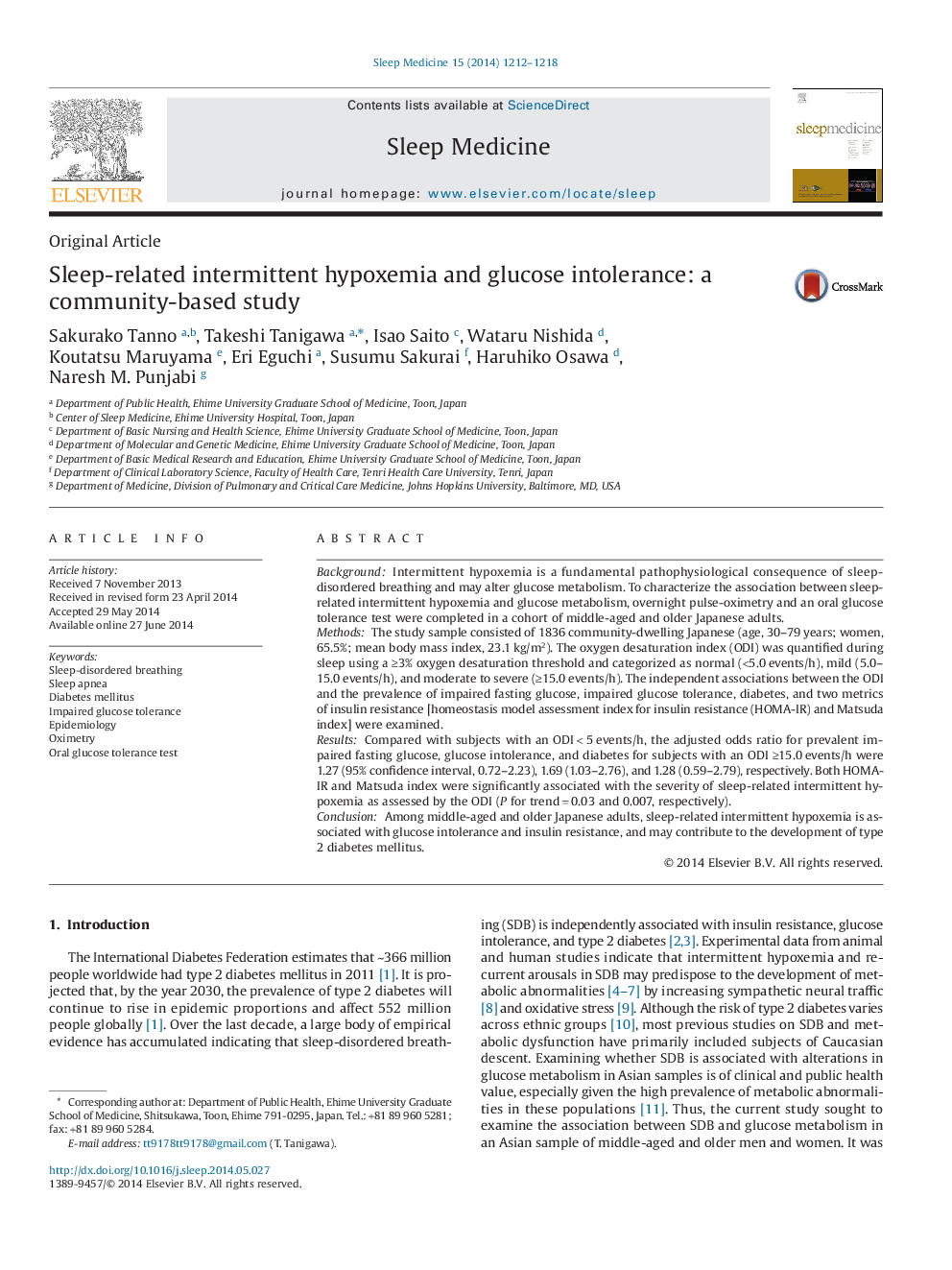| کد مقاله | کد نشریه | سال انتشار | مقاله انگلیسی | نسخه تمام متن |
|---|---|---|---|---|
| 3176062 | 1200243 | 2014 | 7 صفحه PDF | دانلود رایگان |
• The association between sleep-disordered breathing and glucose intolerance was evaluated.
• Oximetry and oral glucose tolerance test were used to evaluate the association.
• Participants were 1836 men and women aged 30–79 years living in rural areas of Japan.
• More post-load hyperglycemia was found in a group with sleep-disordered breathing.
• Insulin resistance is associated with severity of sleep-disordered breathing.
BackgroundIntermittent hypoxemia is a fundamental pathophysiological consequence of sleep-disordered breathing and may alter glucose metabolism. To characterize the association between sleep-related intermittent hypoxemia and glucose metabolism, overnight pulse-oximetry and an oral glucose tolerance test were completed in a cohort of middle-aged and older Japanese adults.MethodsThe study sample consisted of 1836 community-dwelling Japanese (age, 30–79 years; women, 65.5%; mean body mass index, 23.1 kg/m2). The oxygen desaturation index (ODI) was quantified during sleep using a ≥3% oxygen desaturation threshold and categorized as normal (<5.0 events/h), mild (5.0–15.0 events/h), and moderate to severe (≥15.0 events/h). The independent associations between the ODI and the prevalence of impaired fasting glucose, impaired glucose tolerance, diabetes, and two metrics of insulin resistance [homeostasis model assessment index for insulin resistance (HOMA-IR) and Matsuda index] were examined.ResultsCompared with subjects with an ODI < 5 events/h, the adjusted odds ratio for prevalent impaired fasting glucose, glucose intolerance, and diabetes for subjects with an ODI ≥15.0 events/h were 1.27 (95% confidence interval, 0.72–2.23), 1.69 (1.03–2.76), and 1.28 (0.59–2.79), respectively. Both HOMA-IR and Matsuda index were significantly associated with the severity of sleep-related intermittent hypoxemia as assessed by the ODI (P for trend = 0.03 and 0.007, respectively).ConclusionAmong middle-aged and older Japanese adults, sleep-related intermittent hypoxemia is associated with glucose intolerance and insulin resistance, and may contribute to the development of type 2 diabetes mellitus.
Journal: Sleep Medicine - Volume 15, Issue 10, October 2014, Pages 1212–1218
